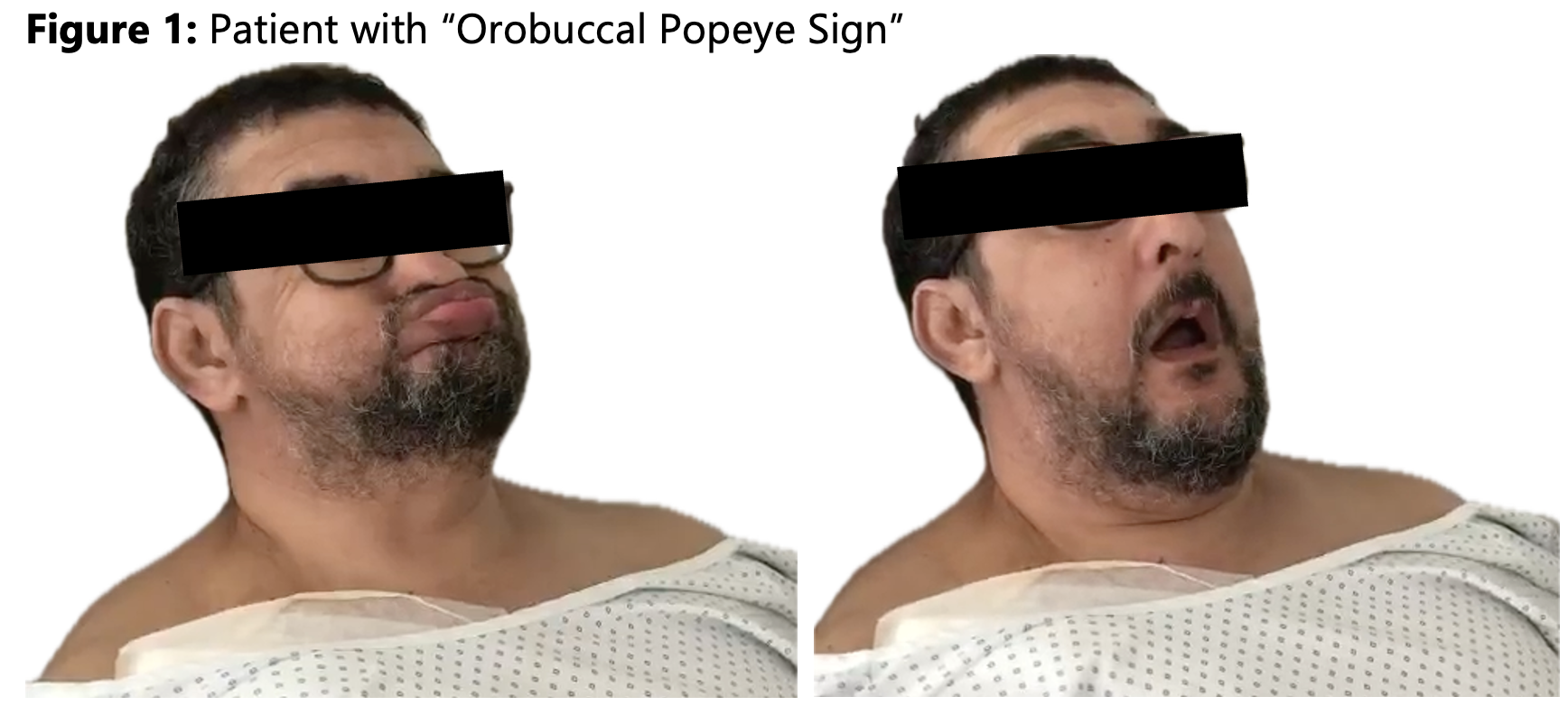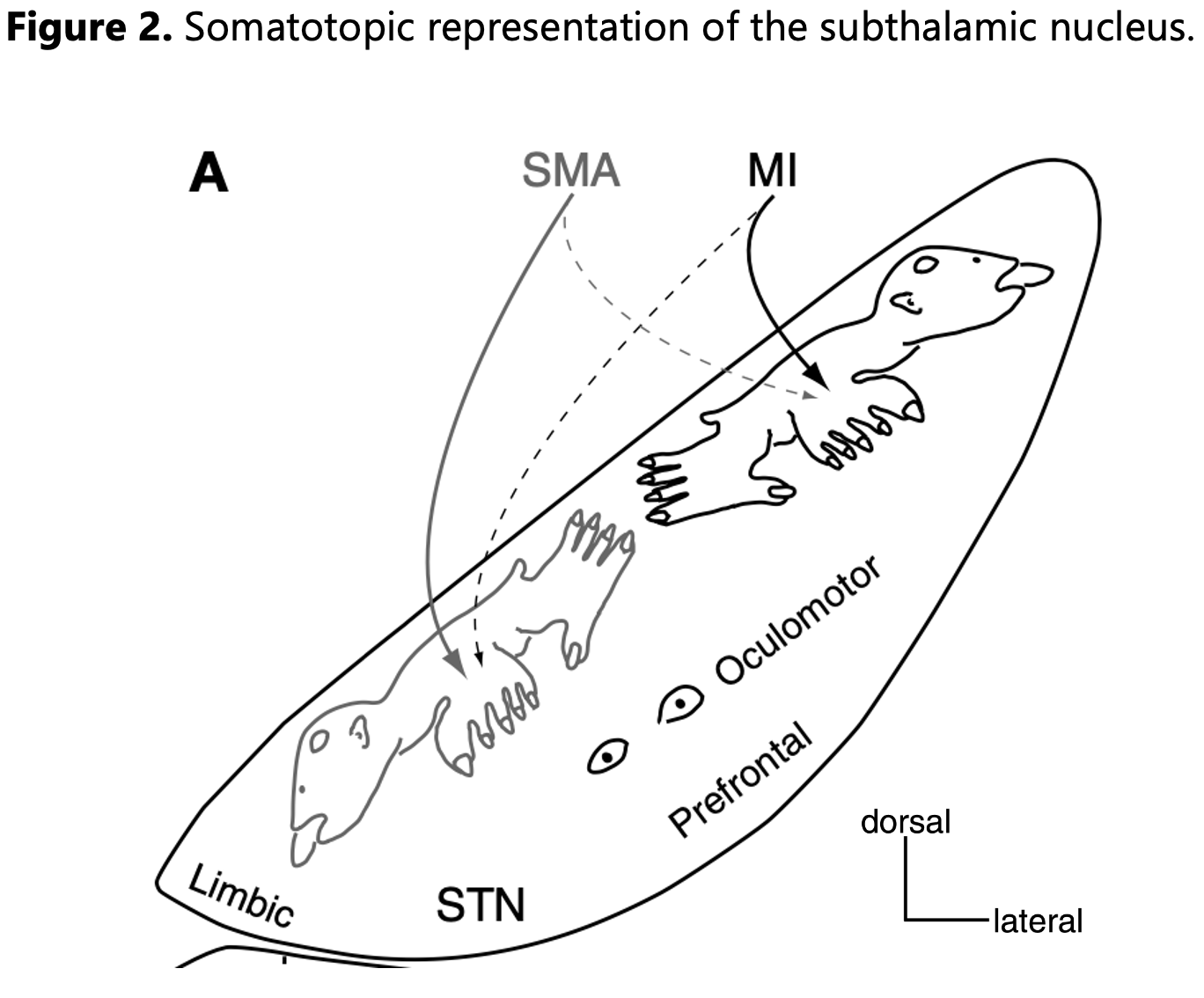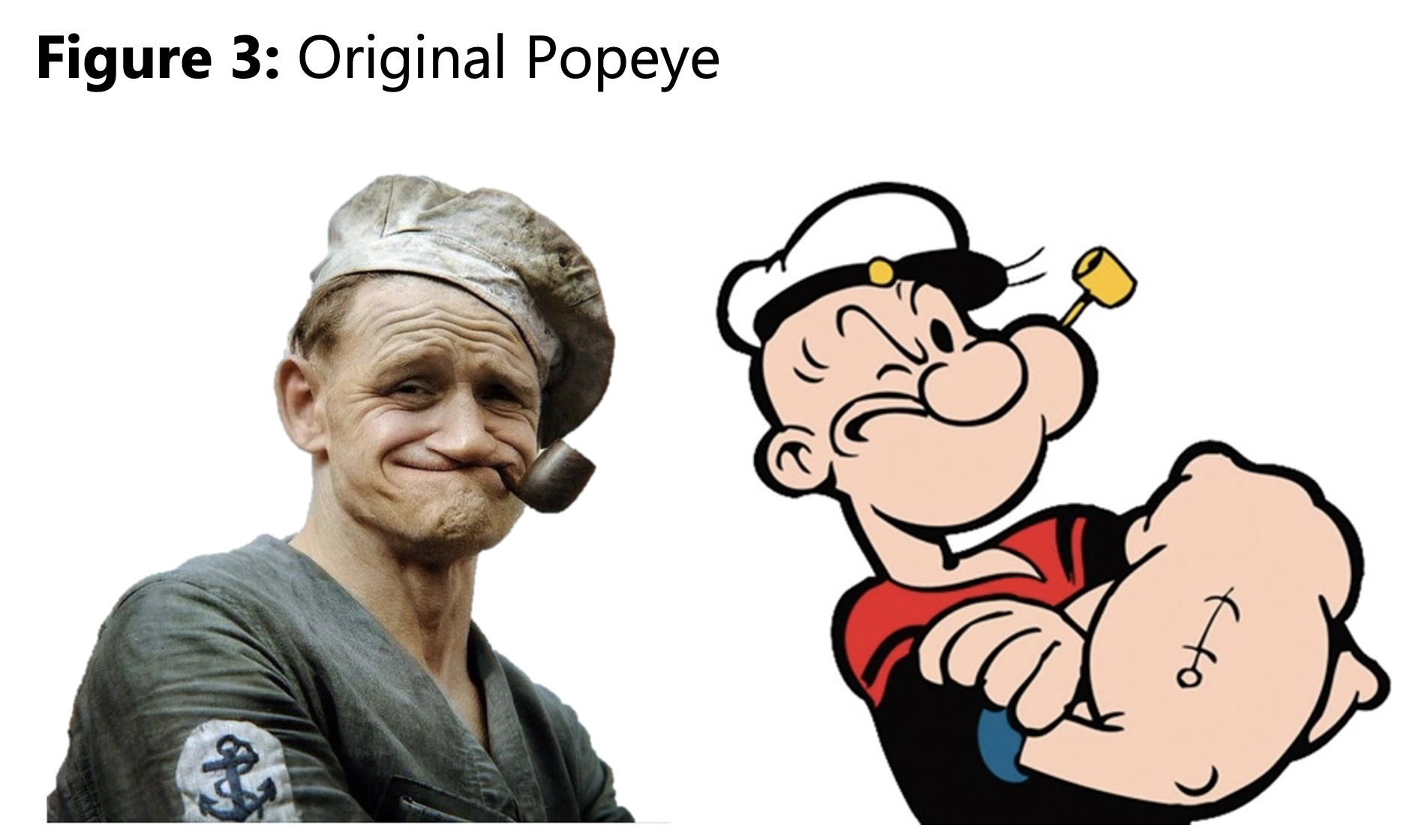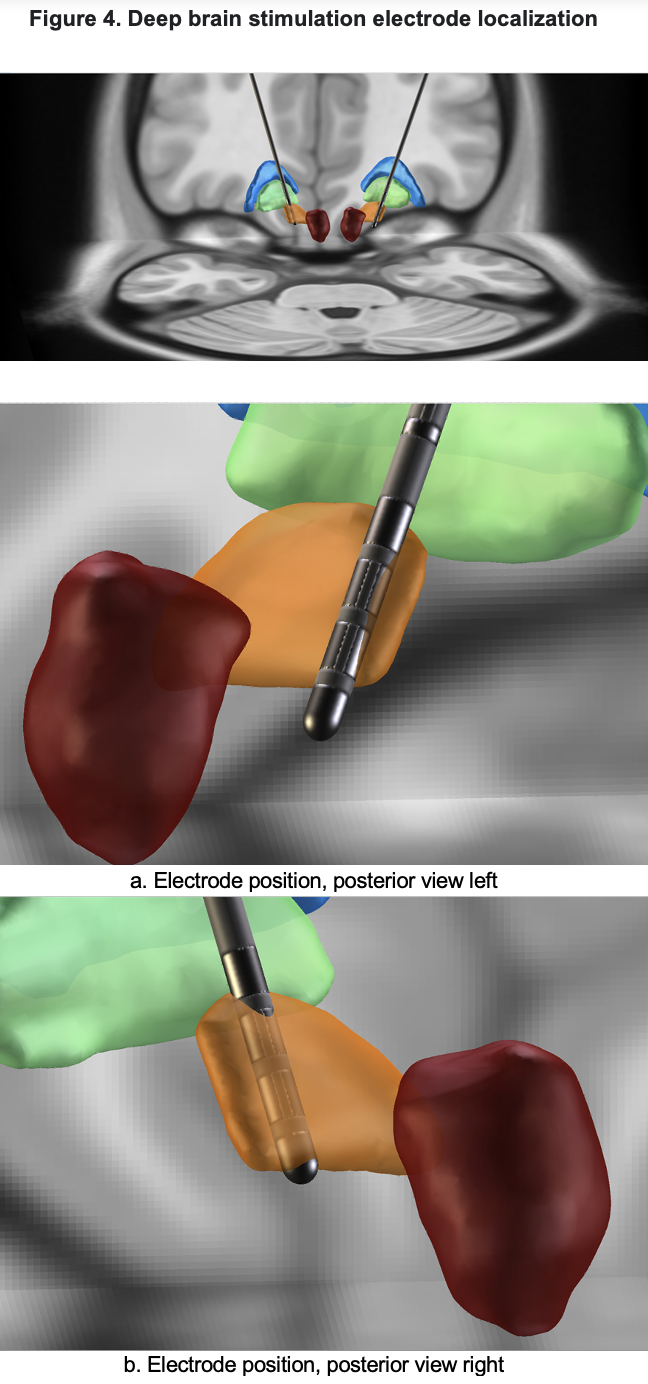Category: Surgical Therapy: Parkinson's Disease
Objective: To describe a clinical case of buccinator movements evoked by subthalamic nucleus deep brain stimulation (STN-DBS) in a patient with advanced Parkinson’s disease (PD) that are spatially correlated with somatotopic area corresponding to face.
Background: Subthalamic nucleus (STN) has a role in modulating outputs of basal nuclei and is the most effective target for surgical treatment of cardinal motor symptoms and motor and non-motor complications of PD. Anatomical and microelectrode recording studies have demonstrated a somatotopic organization of subthalamic nucleus.
Method: A 51-year-old male with PD, starting at 35 with an LRRK2 mutation, had bilateral STN-DBS implantation in May 2021. In July 2023, he experienced motor deterioration due to a depleted generator battery. After replacement, strong buccinator muscle movements were induced mainly by the left STN. Adjusting stimulation resolved the issue.
Results: Stimulation-induced-dyskinesias (SID) has been widely reported in PD and are considered a positive predictor of DBS outcome. They appear in extremities or trunk and most described as dystonic, ballistic or choreic movements. When dyskinesia is severe, stimulation of dorsal areas can alleviate it. In our patient, dyskinetic movements of buccinator muscles induced by acute stimulation of STN correlate with homunculus of dorsolateral region of STN that corresponds to primary motor cortex, where facial musculature is represented. These movements have been called “orobuccal Popeye sign” , which can be explained by a rebound phenomenon, related to an acute increase of electric stimulation of STN generating increased mobility.
Conclusion: This case has allowed us to correlate somatotopic body representation in STN, with reversible orobuccal dyskinesias induced by acute stimulation.
Figure 1
Figure 2
Figure 3
Figure 4
References: 1. Rodriguez-Rojas R, Pineda-Pardo JA, Mañez-Miro J, Sanchez-Turel A, Martinez-Fernandez R, del Alamo M, et al. Functional Topography of the Human Subthalamic Nucleus: Relevance for Subthalamotomy in Parkinson’s Disease. Movement Disorders. 2022 Feb 1;37(2):279–90.
2. Emmi A, Antonini A, Macchi V, Porzionato A, De Caro R. Anatomy and Connectivity of the Subthalamic Nucleus in Humans and Non-human Primates. Vol. 14, Frontiers in Neuroanatomy. Frontiers Media S.A.; 2020.
3. Romanelli P, Esposito V, Schaal DW, Heit G. Somatotopy in the basal ganglia: Experimental and clinical evidence for segregated sensorimotor channels. Vol. 48, Brain Research Reviews. Elsevier; 2005. p. 112–28.
4. Remz MA, Wong JK, Hilliard JD, Tholanikunnel T, Rawls AE, Okun MS. Identification and Management of Persistent Stimulation-Induced Dyskinesia Associated with STN DBS: The See-Saw Dilemma. Tremor Other Hyperkinet Mov (N Y). 2023;13:28.
5. Gjerstad MD, Aarsland ; D, Larsen JP. Development of daytime somnolence over time in Parkinson’s disease [Internet]. 2002. Available from: www.neurology.org
6. Kleiner-Fisman G, Herzog J, Fisman DN, Tamma F, Lyons KE, Pahwa R, et al. Subthalamic nucleus deep brain stimulation: Summary and meta-analysis of outcomes. Vol. 21, Movement Disorders. 2006.
7. Herzog J, Volkmann J, Krack P, Kopper F, Pötter M, Lorenz D, et al. Two-Year Follow-Up of Subthalamic Deep Brain Stimulation in Parkinson’s Disease. Movement Disorders. 2003;18(11):1332–7.
8. Ron L. Alterman MD, Jay L. Shils PhD, Mark Gudesblatt MD, Michele Tagliati MD. Immediate and sustained relief of levodopa-induced dyskinesias after dorsal relocation of a deep brain stimulation lead. Neurosurg Focus. 2004;17:39–42.
9. Matthew A. Brodsky, Penelope Hogarth, John G. Nutt M. OFF–off Rebound Dyskinesia in Subthalamic Nucleus Deep Brain Stimulation of Parkinson’s Disease. Movement Disorders. 2006 Sep;21(9):1487–90.
10. Nambu A. Somatotopic organization of the primate basal ganglia. Front Neuroanat. 2011;5(26):1–9..
To cite this abstract in AMA style:
S. Poveda, T. López, B. Pascual Sedano, I. Aracil Bolaños. Surprising Somatotopy: Buccinator Dyskinesia (Orobuccal Popeye Sign) Induced by Subthalamic Brain Stimulation in Parkinson’s Disease [abstract]. Mov Disord. 2024; 39 (suppl 1). https://www.mdsabstracts.org/abstract/surprising-somatotopy-buccinator-dyskinesia-orobuccal-popeye-sign-induced-by-subthalamic-brain-stimulation-in-parkinsons-disease/. Accessed November 17, 2025.« Back to 2024 International Congress
MDS Abstracts - https://www.mdsabstracts.org/abstract/surprising-somatotopy-buccinator-dyskinesia-orobuccal-popeye-sign-induced-by-subthalamic-brain-stimulation-in-parkinsons-disease/




